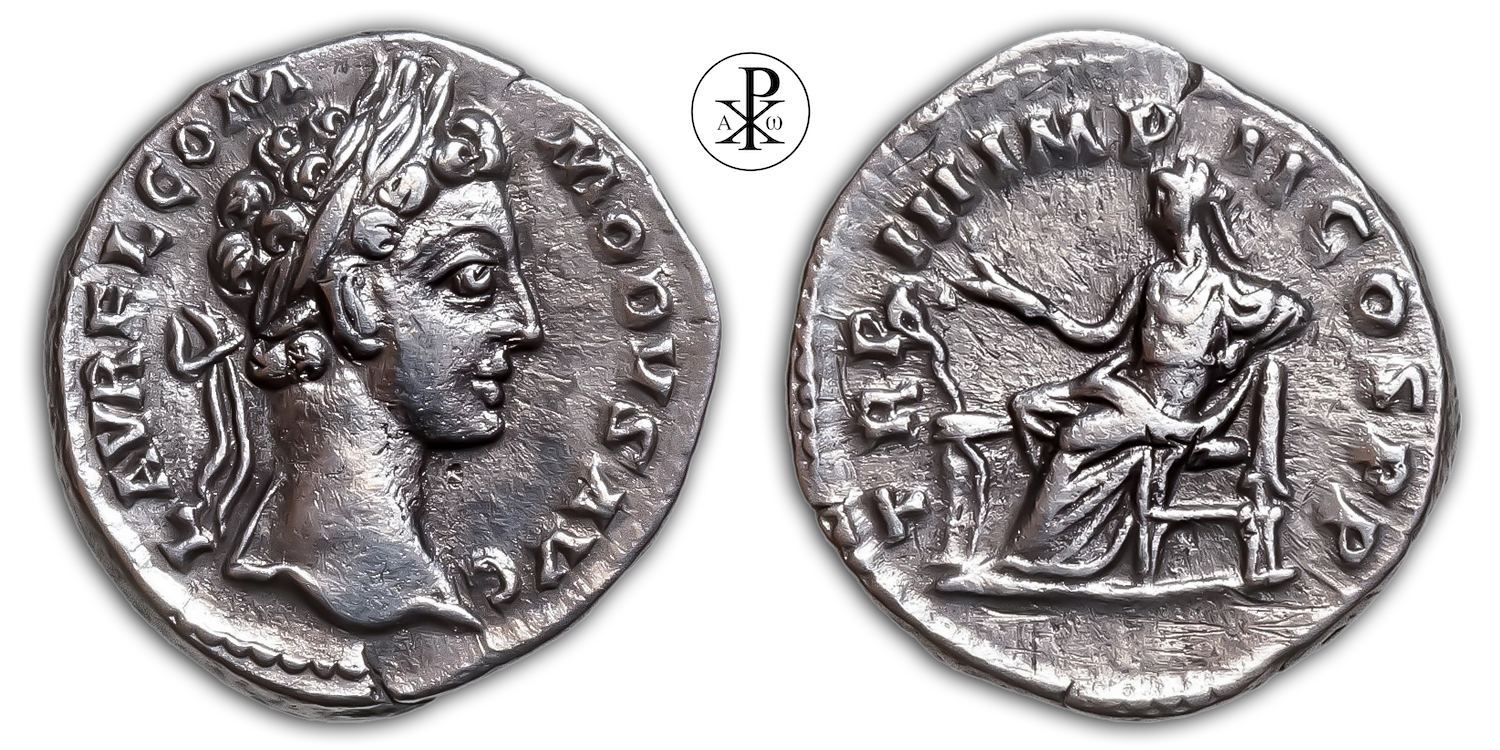Imperator Caesar Lucius Aelius Aurelius Commodus Augustus
Reign: Marcus Aurelius
Mint: Rome
Date: 177/178 AD
Nominal: Denarius
Material: Silver
Diameter: 16mm
Weight: 3.01g
Reference: RIC III Marcus Aurelius 649 var. (only laureate)
OCRE Online: http://numismatics.org/ocre/id/ric.3.m_aur.649
Rare: R2
Provenance: Numidas Numismatik Vienna, Austria
Pedigree: –
Special: Rare Bust type with only laureate
Obverse: Laureate head of Commodus to right
Inscription: L AVREL COMMODVS AVG
Translation: Lucius Aurelius Commodus, Augustus
Reverse: Salus, draped, seated left on low seat, holding branch in extended right hand and resting left arm on side of seat: in front of her, left, a snake coiling upwards from ground
Inscription: TR P III IMP II COS P P
Translation: Tribunicia Potestate Tertia, Imperator Secundum, Consul, Pater Patriae
Translation: Holder of tribunician power for the third time, Imperator for the second time, consul, father of the nation
Comment: In ancient Rome, Salus (Latin for health, salvation, welfare) referred to the personification of public welfare. In early Roman times, the idea arose to see the mystical appearance of vigorous seed growth in the personification of the Salus Semonia. Similar manifestations were also made in the other agriculturally dominated regions of Italy. Salus first enters the historical light more tangibly with the fulfilment of a vow during the Samnite War by Caius Iunius Bubulcus in 302 BC, for he had vowed a temple to the goddess on the Quirinal. From then on, it was assumed that this Salus ensured the happy continuation of the Roman polity. In Augustan times, the goddess was greatly venerated as Salus Augusta, the goddess of state and imperial welfare. Especially under Galba and Vespasian, there was a renewed renaissance of this cult, but now as a sign of state restoration after the rule of the emperors of the Julio-Claudian dynasty. She is usually depicted on coins accompanied by a snake and holding a sacrificial bowl. Sometimes she also carries a sceptre, grain and a laurel wreath.
This denarius belongs to a whole “Salus series” of Marcus Aurelius for his son Commodus from the years 176 to 179 AD. The dating and earliest issue results from the third “Tribunicia Potestate”, which the young Commodus started on 10 December 177 AD (the first consulate and the second empire took place at an earlier date). Since the fourth “Tribunicia Potestate” began on December 10, AD 178, this marks the latest coinage of this type. In 177 AD, the (second) Marcomannic War broke out again. Marcus Aurelius planned a campaign into Germania with his son Commodus in the following year. Both then set out on 03 August 178 AD. Again, with Salus on the reverse of this denarius, the wish for health and welfare of the young co-ruler applies in relation to the venture in Germania.
